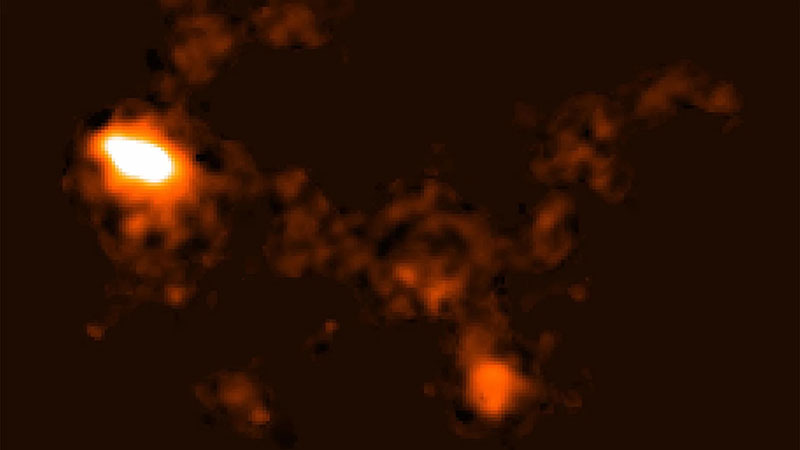
Astronomers discover a gigantic bridge of gas connecting two galaxies Science Daily - October 20, 2025

'Cosmic miracle!' James Webb Space Telescope discovers the earliest galaxy ever seen Space.com - June 1, 2025
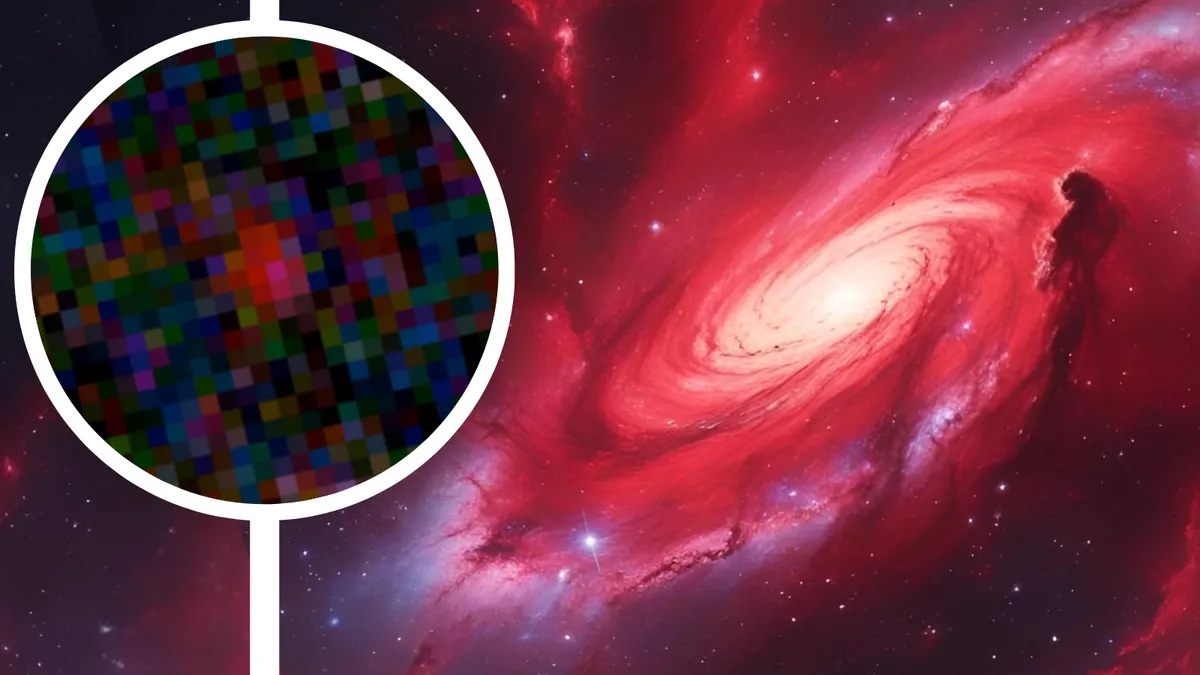
The James Webb Space Telescope (JWST) excels at a lot of things, but there are two things it does better than any other scientific instrument in human history: spotting early galaxies and breaking its own records! Now, the $10 billion NASA space telescope has done both things again, detecting a galaxy that existed just 280 million years after the Big Bang, a feat that the team behind this research has dubbed a "cosmic miracle."
Simulation Theory - Fibonacci Spiral
Massive 'Grand Design' Spiral Galaxy Found Just a Billion Years After Big Bang Science Alert - January 3, 2025
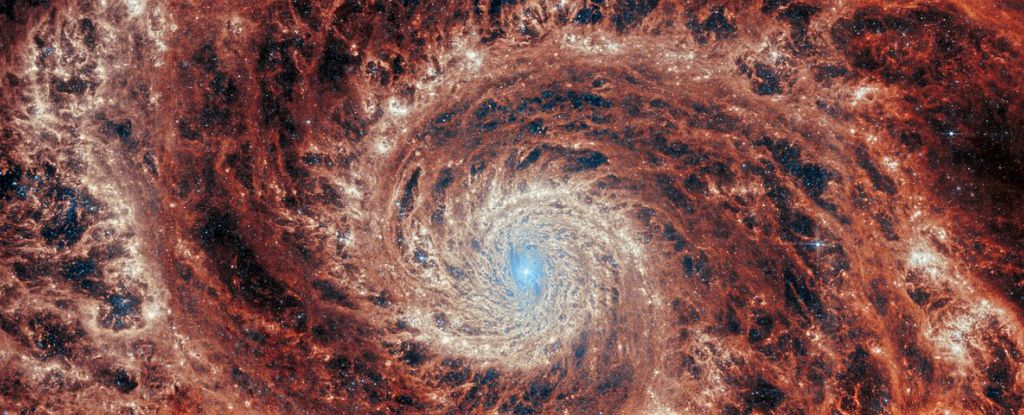
Back when the Universe was new, following the Big Bang some 13.8 billion years ago, galaxies took a bit of time to assemble themselves from the surrounding primordial soup. A new discovery right at the end of the Cosmic Dawn is challenging how long we thought that assembly took. JWST has spotted a huge, ultramassive galaxy as it appeared 12.8 billion years ago, so intricately structured that it can only belong to the most spectacular category of galaxies: "the grand design spiral".
We've Just Seen The First Galaxies in The Universe Being Born
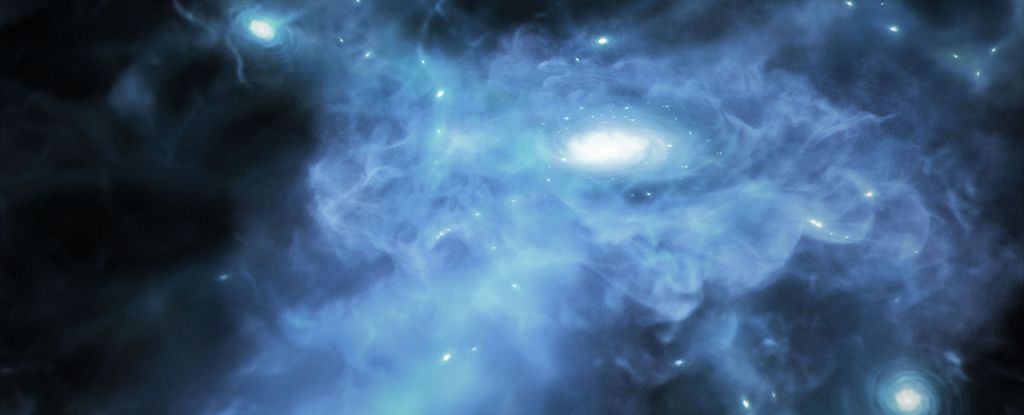
Scientists have just identified the formation processes of some of the Universe's earliest galaxies in the turbulent era of the Cosmic Dawn. JWST observations of the early Universe around 13.3 to 13.4 billion years ago – just a few hundred million years after the Big Bang - have revealed telltale signs of gas reservoirs being actively slurped into three newly forming and growing galaxies.
Some of the oldest stars in the universe found hiding near the Milky Way's edge - and they may not be alone Live Science - May 17, 2024
Astronomers reanalyzed the chemical composition of three stars in the Milky Way's halo and found that they are between 12 and 13 billion years old. They may have also been stolen from other galaxies. Three alien stars circling the Milky Way could be some of the oldest ever found in the universe, a new study reveals. The ancient celestial objects may have been among the first to form after the Big Bang and were likely stolen by our galaxy during gravitational tugs-of-war billions of years ago.
Astronomers Discover The Most Massive Supercluster Ever Found Science Alert - March 23, 2024
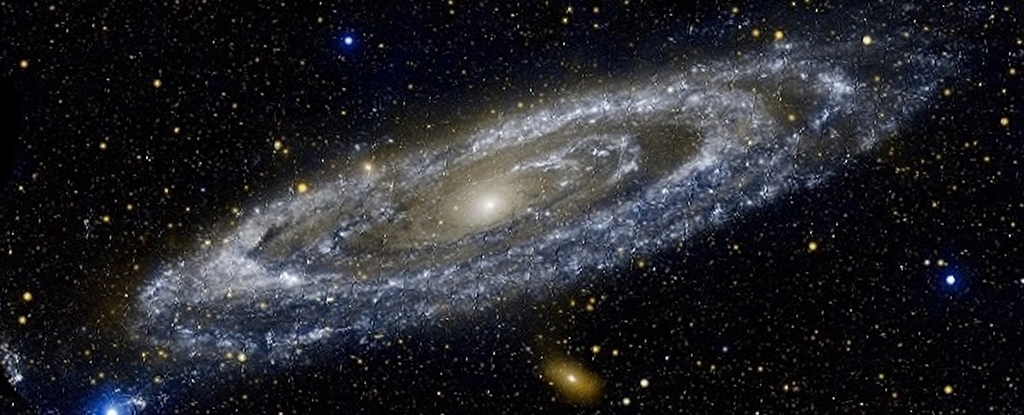
The Earth's place in space is a fairly familiar one with it orbiting an average star. The star – our Sun – orbits the centre of our Galaxy the Milky Way. From here onwards, the story is less well known.
Scientists pick up shock waves from colliding galaxies BBC - June 29, 2023
Scientists have picked up shock waves from the orbit of supermassive black holes at the heart of distant galaxies as they begin to merge. This may be the first direct evidence of giant black holes distorting space and time as they spiral in on each other. The theory is that this is how galaxies grow. Now astronomers may soon be able to watch it happen. These distortions are happening all the time, all across the Universe.
Starlight From Quasar Galaxies Has Been Detected at The Dawn of The Universe Science Alert - June 29, 2023
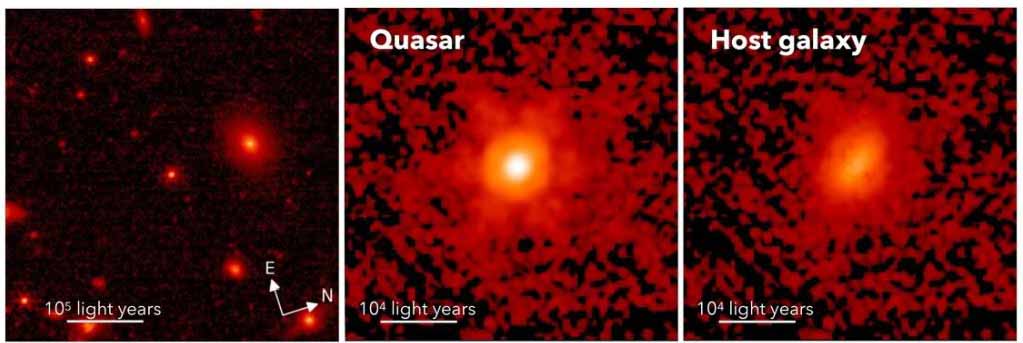
With combined data from the Subaru Telescope in Hawaii and the James Webb Space Telescope, a large international team has been able to probe two quasar galaxies in the early Universe to learn more about this mysterious time in the history of everything.
Complex Molecules Detected in Ancient Galaxy SPT0418-47 Near The Dawn of Time Science Alert - June 5, 2023

In a galaxy hanging out in the early Universe less than 1.5 billion years after the Big Bang, the James Webb Space Telescope has made an astonishing detection. From light that traveled for over 12 billion years from a galaxy known as SPT0418-47, astronomers teased out the spectral signal of complex molecules - the polycyclic aromatic hydrocarbons (PAHs) that make up some of the dust grains in the clouds that drift between the stars, soaking up the light and re-emitting it at infrared wavelengths.
Hundreds of Mystery Structures Found at The Heart of The Milky Way Science Alert - June 2, 2023
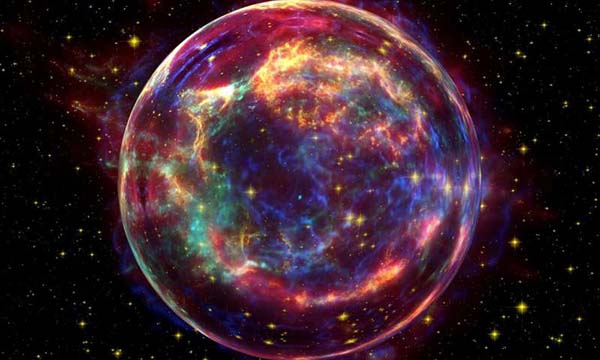
An investigation into the mystery filaments hanging in space around the heart of the Milky Way has turned up an entirely new population of them, aligned along the galactic plane and pointing in the direction of the galactic center.
Mysterious Dark Galaxy Emits No Visible Light, Scientists Say Science Alert - February 11, 2023
Galaxies come in many different shapes and sizes, but the basic ingredients seem fairly consistent. There's usually a big black hole at the center, a bunch of stars and gas, and a generous serving of dark matter that helps glue the whole thing together. While dark matter is, well, dark, the stars, gas, and swirling core of heated material stand out with the radiant beauty of a city in the night. However, one newly discovered dwarf galaxy located a mere 94 million light-years away is defying expectations. It's named FAST J0139+4328, and it's not emitting any optical light. In fact, it's barely emitting any light at all. FAST J0139+4328 appears to be what is known as a dark galaxy. Aside from a small smattering of stars, the galaxy seems to be made up almost entirely of dark matter.
Stunning JWST Photo Tranforms a Distant Galaxy Into a Sparkling Christmas Ornament Science Alert - December 25, 2022
The James Webb Space Telescope just gave a spiral galaxy 230 million light-years away a new sparkling glamor shot perfect enough for the Christmas tree. While the galaxy has the rather un-glamorous name of NGC 7469, it's been a fascinating subject to study.
Astronomers identify the ancient heart of the Milky Way galaxy PhysOrg - December 20, 2022
A group of MPIA astronomers has managed to identify the "poor old heart of the Milky Way" - a population of stars left over from the earliest history of our home galaxy, which resides in our galaxy's core regions. Our home galaxy, the Milky Way, gradually formed over nearly the entire history of the universe, which spans 13 billion years. Over the past decades, astronomers have managed to reconstruct different epochs of galactic history in the same way that archaeologists would reconstruct the history of a city: Some buildings come with explicit dates of construction.
Astronomers observe intra-group light - the elusive glow between distant galaxies Science Daily - November 23, 2022
An international team of astronomers have turned a new technique onto a group of galaxies and the faint light between them - known as 'intra-group light' - to characterize the stars that dwell there. Using their sensitive technique, which eliminates light from all objects except that from the intra-group light, the researchers not only detected the intra-group light but were able to study and tell the story of the stars that populate it.
Scientists discover massive 'extragalactic structure' behind the Milky Way Live Science - November 11, 2022
Our Galaxy Could Be Evaporating as Dead Stars Flee The Milky Way Science Alert - October, 2022
Everything dies in the end, even the brightest of stars. In fact, the brightest stars are the ones that live the shortest lives. They consume all the hydrogen they have within a few million years, then explode as brilliant supernovae. Their core remains collapse into a neutron star or black hole. These small, dark objects litter our galaxy, like a cosmic graveyard.
Amazing New Webb Space telescope Images of Spiral Galaxies
Science Alert - July 21, 2022
The first is NGC 628, also known as the Phantom Galaxy. The other is NGC 7496. Both are relatively close to the Milky Way, and both are the subject of ongoing observations as part of the Physics at High Angular resolution in Nearby GalaxieS (PHANGS) survey, to better chart the connections between young stars and the clouds of cold molecular gas that give birth to them.
Astronomers Have Spotted a Record-Breaking Magnetic Field in Space, And It's Epic Science Alert - July 16, 2022
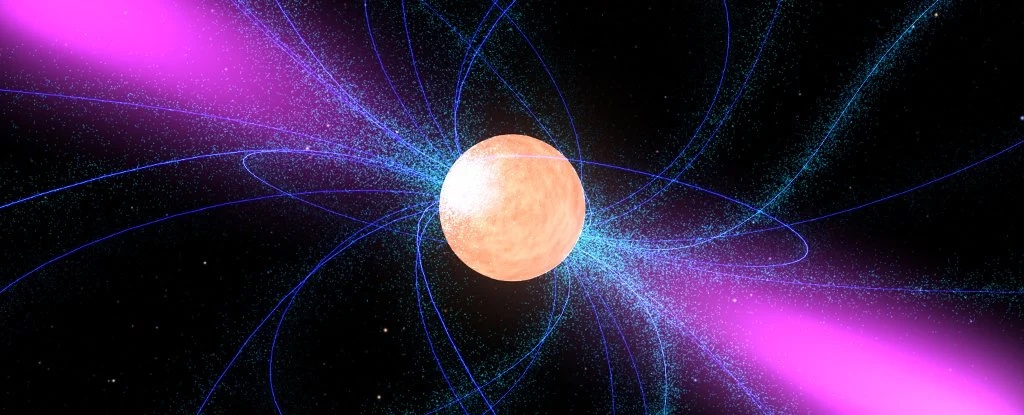
Far out in the Milky Way, roughly 22,000 light years from Earth, a star unlike any other roars with a magnetic force that beats anything physicists have ever seen. At a whopping 1.6 billion Tesla, a pulsar called Swift J0243.6+6124 smashes the previous records of around 1 billion Tesla, discovered surrounding the pulsars GRO J1008-57 and 1A 0535+262.
A billion years ago, an absolutely monstrous collision of two clusters of galaxies produced a pair of shock waves of absolutely epic proportions Science Alert - February 24, 2022
Today, the structures gleam brightly in radio wavelengths, so huge they could easily engulf the Milky Way galaxy's estimated 100,000 light-year diameter, stretching up to 6.5 million light-years through intergalactic space
Element found in our teeth, fluoride, detected for the first time in a galaxy 12 billion light-years away CNN - November 5, 2021
The elements found across our solar system, on Earth and even in our own bodies originated inside the cores of stars, which released them in stellar explosions. But the mystery of how fluorine was created within these stars has persisted.
It's Official: The Fast Radio Burst Coming From Within Our Galaxy Is Repeating Science Alert - November 17, 2020
The first object within the Milky Way galaxy caught emitting fast radio bursts is now officially a repeater. In a new peer-reviewed paper, SGR 1935+2154 has been described spitting out two more powerful radio signals consistent with those seen from extragalactic sources. The new signals, however, are not all the same strength. This suggests that there could be more than one process inside magnetars that are capable of producing these enigmatic bursts - and that SGR 1935+2154 could be a dream come true, an excellent laboratory for understanding them. Fast radio bursts have been a puzzle since their discovery in 2007. They're extremely powerful bursts of energy only in radio frequencies, lasting just milliseconds long at most. And there were several major difficulties in figuring out what they were.
The First Star in Our Galaxy Caught Sending Out Fast Radio Bursts Is Doing It Again Science Alert - October 22, 2020
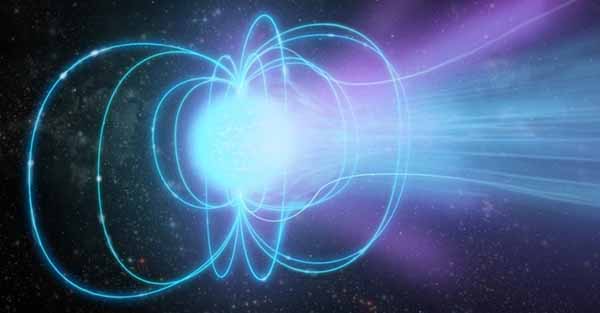
A little dead star that dazzled us earlier this year is not done with its shenanigans. Magnetar SGR 1935+2154, which in April emitted the first known fast radio burst from inside the Milky Way, has flared up once more, giving astronomers yet another chance to solve more than one major cosmic mystery.
A Giant 'Wall' of Galaxies Has Been Found Stretching Across The Universe Science Alert - July 14, 2020
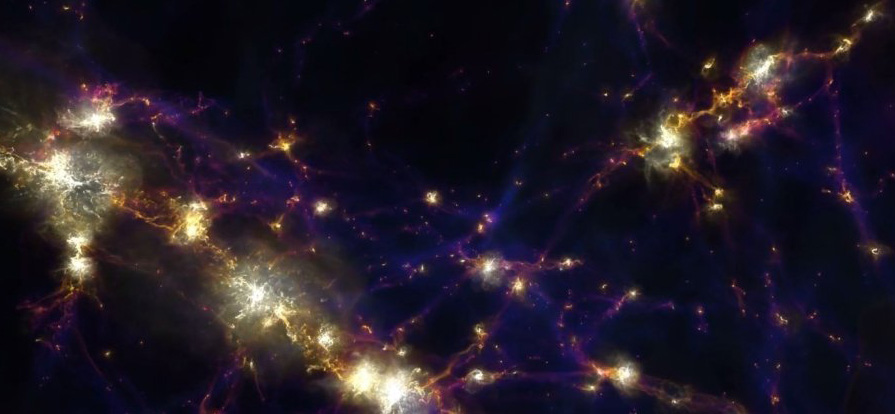
The Universe isn't just a random scattering of galaxies sprinkled throughout an expanding void. The closer we look, the more we see that there are structures - some of which are incomprehensibly vast groupings and clusters of galaxies that are gravitationally bound together. uch a structure has just been discovered arcing across the southern edge of the sky, and it's a colossus, spanning an immense 1.37 billion light-years from end to end. Its discoverers have named it the South Pole Wall. Although the size is remarkable - it's one of the largest structures in space we've ever seen - we know exactly what the South Pole Wall is. It's a galaxy filament, a huge formation of galaxies that forms a border between the empty spaces of cosmic voids that together form the cosmic web. Hence, we call it a wall.
Hubble Captures Photo of a Stunning 'Fluffy' Galaxy With an Oddly Empty Centre Science Alert - July 12, 2020
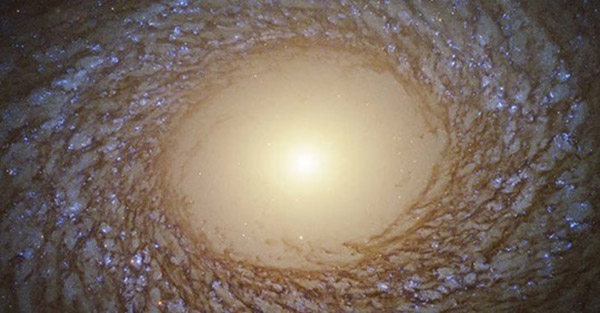 NASA's most powerful space telescope, Hubble, captured a uniquely picturesque galaxy in a photo the agency released on Thursday. The galaxy, called NGC 2775, is located 67 million light-years away and doesn't seem to be forming stars that much anymore. Astronomers can tell that's the case because of the relatively empty, clear bulge at the galaxy's centre.
NASA's most powerful space telescope, Hubble, captured a uniquely picturesque galaxy in a photo the agency released on Thursday. The galaxy, called NGC 2775, is located 67 million light-years away and doesn't seem to be forming stars that much anymore. Astronomers can tell that's the case because of the relatively empty, clear bulge at the galaxy's centre.
ALMA spots twinkling heart of Milky Way
PhysOrg - May 22, 2020
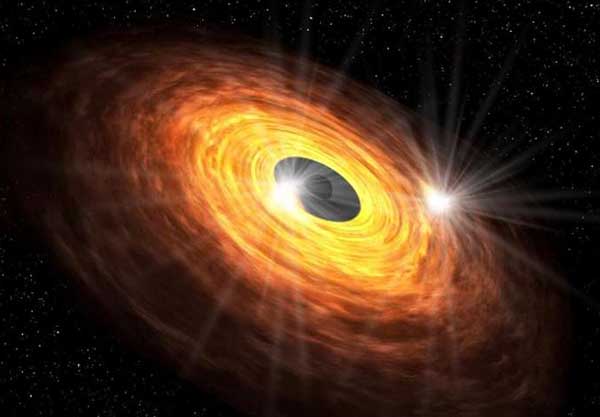
Astronomers presume that a supermassive black hole with a mass of 4 million suns is located at the center of Sgr A*. Flares of Sgr A* have been observed not only in millimeter wavelength, but also in infrared light and X-ray. However, the variations detected with ALMA are much smaller than the ones previously detected, and it is possible that these levels of small variations always occur in Sgr A*. The black hole itself does not produce any kind of emission. The source of the emission is the scorching gaseous disk around the black hole. The gas around the black hole does not go straight to the gravitational well, but it rotates around the black hole to form an accretion disk.
From Before Its Birth - Oldest, Pristine Stars in Universe Found at Milky Way's Center Daily Galaxy - January 24, 2020
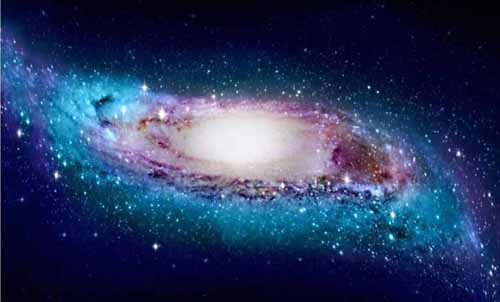
The pristine stars are among the oldest surviving stars in the Universe, and certainly the oldest stars we have ever seen
Nineteen newly discovered dwarf galaxies seem to be missing their dark matter, and physicists aren't sure why. Live Science - December 4, 2019
The find dramatically increases the number of galaxies that appear to be missing dark matter, the mysterious, invisible stuff that exerts gravitational pull, yet emits no light. Dark matter is thought to be a key ingredient in galaxy formation, with its gravity pulling together atoms of gas to form galaxies. We can tell dark matter is present in a galaxy because it makes the matter in that galaxy swirl faster than it would if the matter we see made up the galaxy's whole mass. This faster swirling has shown up in every galaxy that could be precisely measured. Recently, however, researchers have found that certain small galaxies, now including these 19, behave as if they're dominated by baryons - the particles that make up ordinary matter. The evidence for their unseen halos of dark matter is missing.
Gaia untangles the starry strings of the Milky Way PhysOrg - August 28, 2019
The analysis of the Gaia data, relying on a machine learning algorithm, uncovered nearly 2000 previously unidentified clusters and co-moving groups of stars up to about 3000 light years from us - roughly 750 times the distance to Proxima Centauri, the nearest star to the Sun. The study also determined the ages for hundreds of thousands of stars, making it possible to track stellar 'families' and uncover their surprising arrangements.
The Universe just got a lot bigger! New map of the night sky unearths 300,000 more galaxies Daily Mail - February 19, 2019
A map of the night sky charting hundreds of thousands of previously unknown galaxies has been revealed. It was taken using a telescope that can detect faint light sources most optical instruments are unable to see. The international team behind the unprecedented space survey said their discovery literally shed new light on some of the Universe's deepest secrets, including the physics of black holes and how clusters of galaxies evolve.
'River of Stars' Streaming Through the Milky Way Was Hiding in Plain Sight for 1 Billion Years Live Science - February 19, 2019
One billion years ago, a cluster of stars formed in our galaxy. Since then, that cluster has whipped four long circles around the edge of the Milky Way. In that time, the Milky Way's gravity has stretched that cluster out from a blob into a long stellar stream. Right now, the stars are passing relatively close to Earth, just about 330 light-years away. And scientists say that river of stars could help determine the mass of the entire Milky Way. Astronomers have seen these stars before, mixed in with lots of stars all around them. But until now, they didn't realize the stars were part of a group. The river, which is 1,300 light-years long and 160 light-years wide, winds through the Milky Way's vast, dense star field. But 3D-mapping data from Gaia, a European Space Agency spacecraft, showed that the stars in the stream moved together at roughly the same speed and in the same direction.
Gaia detects a shake in the Milky Way PhysOrg - September 20, 2018
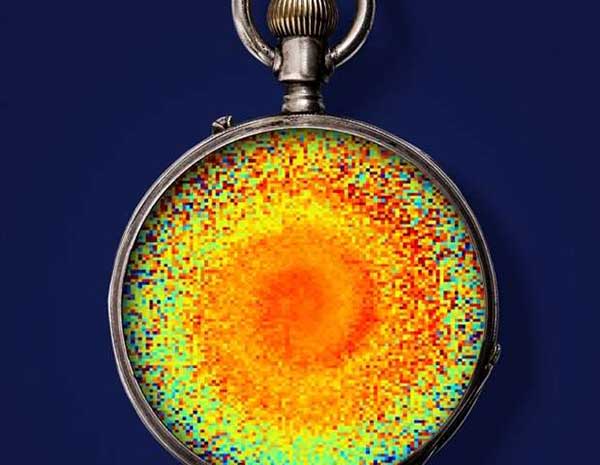
A team led by researchers has found, through the analysis of Gaia data, substructures in the Milky Way that were previously unknown. The findings, which appeared when combining positions and speed of 6 million stars from the galactic disk.
New Star Map Could Change Everything We Know About the Milky Way Smithsonian - April 25, 2018
In 2016, the European Space Agency released the first data set from its Gaia satellite, which is tasked with surveying stars to create a detailed 3-D map of our quadrant of the Milky Way. Over 1 billion stars twinkled in those first images, which included detailed data on 2 million of the stars. Today, ESA released an even more mind-blowing batch of Gaia data encompassing 1.7 billion stars including incredible detail on almost every speck of light.
The biggest structure in the universe: Astronomers spot a massive collision 12.4 billion light years away that may have created a mega-galaxy Daily Mail - April 25, 2018
Astronomers detect 'whirlpool' movement in earliest galaxies; swirling gases soon after Big Bang Science Daily - January 11, 2018
Astronomers have looked back to a time soon after the Big Bang, and have discovered swirling gas in some of the earliest galaxies to have formed in the universe. These 'newborns' -- observed as they appeared nearly 13 billion years ago -- spun like a whirlpool, similar to our own Milky Way. This is the first time that it has been possible to detect movement in galaxies at such an early point in the universe's history.
 Take a 360 degree tour of the Milky Way: Incredible Nasa visualization lets you explore giant stars and monster black holes that lie at the heart of our galaxy Daily Mail - January 11, 2018
Take a 360 degree tour of the Milky Way: Incredible Nasa visualization lets you explore giant stars and monster black holes that lie at the heart of our galaxy Daily Mail - January 11, 2018
Idaho spot that is the one of the best places in the world to see the Milky Way named America's first 'International Dark Sky Reserve' Daily Mail - December 20, 2017
A giant chunk of central Idaho with a dazzling night sky has become the nation's first International Dark Sky Reserve. The International Dark-Sky Association late Monday designated the 1,400-square-mile Central Idaho Dark Sky Reserve. The sparsely populated area's night skies are so pristine that interstellar dust clouds are visible in the Milky Way.
Huge mystery object at the heart of our galaxy that is 13 times the size of Jupiter baffles experts who have no idea if it is a planet or a star Daily Mail - November 11, 2017
Astronomers have discovered a massive alien world circling a star located 22,000 light years away, at the centre of the Milky Way's bulge.
The object, dubbed OGLE-2016-BLG-1190Lb, is 13 times the size of Jupiter and is so vast that experts are unsure whether it is even a planet. Experts used Nasa's Spitzer Space Telescope and the light-warping effects of gravity to uncover the mysterious celestial body.
Although it is orbiting its own star, researchers say 'Planet X' may in fact be a failed star, known as a brown dwarf.
The most ancient spiral galaxy confirmed PhysOrg - November 3, 2017
The galaxy, known as A1689B11, existed 11 billion years in the past, just 2.6 billion years after the Big Bang, when the universe was only one fifth of its present age. It is thus the most ancient spiral galaxy discovered so far.The researchers used a powerful technique that combines gravitational lensing with the cutting-edge instrument the Near-infrared Integral Field Spectrograph (NIFS) on the Gemini North telescope in Hawaii to verify the vintage and spiral nature of this galaxy.
The Strange Similarity of Neuron and Galaxy Networks Nautil.us - July 25, 2017
>
An astrophysicist and a neuroscientist joined forces to quantitatively compare the complexity of galaxy networks and neuronal networks. The first results from our comparison are truly surprising: Not only are the complexities of the brain and cosmic web actually similar, but so are their structures. The universe may be self-similar across scales that differ in size by a factor of a billion billion billion. The total number of neurons in the human brain falls in the same ballpark of the number of galaxies in the observable universe.
Fastest stars in the Milky Way are 'runaways' from another galaxy Science Daily - July 5, 2017
A group of astronomers have shown that the fastest-moving stars in our galaxy - which are traveling so fast that they can escape the Milky Way - are in fact runaways from a much smaller galaxy in orbit around our own. These fast-moving stars, known as hypervelocity stars, were able to escape their original home when the explosion of one star in a binary system caused the other to fly off with such speed that it was able to escape the gravity of the LMC and get absorbed into the Milky Way.
The Milky Way exists in a giant hole of the universe that may have helped life on Earth to develop Daily Mail - June 8, 2017
Experts at the University of Wisconsin-Madison have found that our galaxy exists in one of the holes in the filament filled structure of the universe, which they compare to Swiss cheese. While the finding that we live in one of the quieter cosmic neighborhoods may seem bleak, it does help to resolve a major source of tension in our understanding of the universe. Different techniques used by astrophysicists to measure how fast the universe is expanding seem to give different results, but the presence of such voids may help to explain this. And life may have been able to flourish on Earth, without being swallowed up by black holes or caught in the supernovae explosions of dying stars, because of it.
Asymmetric structure in the supermassive black hole at the galaxy's center PhysOrg - January 9, 2017
The supermassive black hole candidate at the center of our Galaxy (associated with the radio source Sgr A*) is a prime candidate for studying the physical phenomena associated with accretion on to a supermassive black hole. Sgr A* is thought to accrete at an extremely low rate; analogous situations in X-ray binary stars suggest that a jet may be present, making it challenging to formulate a fully self-consistent model that simultaneously explains its spectrum, its variability, its size and its shape. Because Sgr A* is by far the closest supermassive black hole, its expected angular size (the shadow cast from its event horizon) is the largest of any known black hole candidate, making it a prime target for studies using very long baseline interferometry at mm wavelengths, which are capable of reaching spatial resolutions comparable to the expected shadow size.
Scientists discover a dark milky way Science Daily - August 26, 2016
Using the world's most powerful telescopes, an international team of astronomers has found a massive galaxy that consists almost entirely of dark matter. The galaxy, Dragonfly 44, is located in the nearby Coma constellation and had been overlooked until last year because of its unusual composition: It is a diffuse "blob" about the size of the Milky Way, but with far fewer stars.
This Weird Galaxy Is Actually 99.99 Percent Dark Matter Live Science - August 26, 2016
Astronomers have discovered a galaxy as big as the Milky Way that consists almost entirely of dark matter, a mysterious and invisible substance that scientists have been trying to figure out for decades. Only one-hundredth of one percent of the galaxy is ordinary, visible matter like stars and planets. The other 99.99 percent of the stuff in this galaxy can't be seen. No one really knows what dark matter is made of, but scientists believe it exists because they can see the effects of its gravity on other things in space. Whatever it may be, about 80 percent of the mass in the universe is dark matter. This dark galaxy, named Dragonfly 44, was first detected in 2015, through the use of the Dragonfly Telephoto Array in New Mexico. With a combination of eight telephoto lenses and cameras, the array is designed to look at objects in space that aren't bright enough to see with other telescopes.
A source accelerating Galactic cosmic rays to unprecedented energy discovered at the center of the Milky Way Science Daily - March 18, 2016
For more than ten years the H.E.S.S. observatory in Namibia, run by an international collaboration of 42 institutions in 12 countries, has been mapping the center of our galaxy in very-high-energy gamma rays. These gamma rays are produced by cosmic rays from the innermost region of the Galaxy. A detailed analysis of the latest H.E.S.S. data reveals for the first time a source of this cosmic radiation at energies never observed before in the Milky Way: the supermassive black hole at the center of the Galaxy, likely to accelerate cosmic rays to energies 100 times larger than those achieved at the largest terrestrial particle accelerator.
 Watch as the space telescope zooms in on GN-z11, the remotest galaxy ever seen. Scientific American - March 4, 2016
Watch as the space telescope zooms in on GN-z11, the remotest galaxy ever seen. Scientific American - March 4, 2016
Event Horizon Telescope reveals magnetic fields at Milky Way's central black hole PhysOrg - December 3, 2015
Most people think of black holes as giant vacuum cleaners sucking in everything that gets too close. But the supermassive black holes at the centers of galaxies are more like cosmic engines, converting energy from infalling matter into intense radiation that can outshine the combined light from all surrounding stars. If the black hole is spinning, it can generate strong jets that blast across thousands of light-years and shape entire galaxies. These black hole engines are thought to be powered by magnetic fields. For the first time, astronomers have detected magnetic fields just outside the event horizon of the black hole at the center of our Milky Way galaxy.
Hubble and Spitzer telescopes see magnified image of the faintest galaxy from the early universe PhysOrg - December 3, 2015
The team has nicknamed the object Tayna, which means "first-born" in Aymara, a language spoken in the Andes and Altiplano regions of South America. Though Hubble and Spitzer have detected other galaxies that are record-breakers for distance, this object represents a smaller, fainter class of newly-forming galaxies that until now have largely evaded detection. These very dim objects may be more representative of the early universe, and offer new insight on the formation and evolution of the first galaxies.
Gravity's Grin APOD - November 27, 2015
Albert Einstein's general theory of relativity, published 100 years ago this month, predicted the phenomenon of gravitational lensing. And that's what gives these distant galaxies such a whimsical appearance, seen through the looking glass of X-ray and optical image data from the Chandra and Hubble space telescopes. Nicknamed the Cheshire Cat galaxy group, the group's two large elliptical galaxies are suggestively framed by arcs. The arcs are optical images of distant background galaxies lensed by the foreground group's total distribution of gravitational mass dominated by dark matter. In fact the two large elliptical "eye" galaxies represent the brightest members of their own galaxy groups which are merging. Their relative collisional speed of nearly 1,350 kilometers/second heats gas to millions of degrees producing the X-ray glow shown in purple hues. Curiouser about galaxy group mergers? The Cheshire Cat group grins in the constellation Ursa Major, some 4.6 billion light-years away.
First estimate of the number of small, primordial galaxies in the early universe Science Daily - September 10, 2015
Astronomers have generated the most accurate statistical description yet of faint, early galaxies as they existed in the universe 500 million years after the Big Bang. The three panels show different components of near-infrared background light detected by the Hubble Space Telescope in deep-sky surveys. The one on the left is a mosaic of images taken over a 10-year period. When all the stars and galaxies are masked, the background signals can be isolated, as seen in the second and third panels. The middle one reveals “intrahalo light” from rogue stars torn from their host galaxies, and the panel on the right captures the signature of the first galaxies formed in the universe.
Assembly of galaxies in the early universe witnessed for the first time Science Daily - July 22, 2015
The Atacama Large Millimeter/submillimeter Array (ALMA) has been used to detect the most distant clouds of star-forming gas yet found in normal galaxies in the early universe. The new observations allow astronomers to start to see how the first galaxies were built up and how they cleared the cosmic fog during the era of reionization. This is the first time that such galaxies are seen as more than just faint blobs. When the first galaxies started to form a few hundred million years after the Big Bang, the Universe was full of a fog of hydrogen gas. But as more and more brilliant sources -- both stars and quasars powered by huge black holes -- started to shine they cleared away the mist and made the Universe transparent to ultraviolet light . Astronomers call this the epoch of reionisation, but little is known about these first galaxies, and up to now they have just been seen as very faint blobs. But now new observations using the power of ALMA are starting to change this.
Scientists discover brightest early galaxy and likely first generation stars PhysOrg - June 17, 2015
Astronomers using several of the largest telescopes on Earth and space have discovered the brightest galaxy yet found in the early Universe and have strong evidence that examples of the first generation of stars lurk within it. Astronomers have long theorized the existence of a first generation of stars known as Population III stars that were born out of the primordial material from the Big Bang. All the heavier chemical elements essential to life - including oxygen, nitrogen, carbon and iron - were forged in the bellies of stars. This means the first stars must have formed out of the only elements to exist prior to stars: hydrogen, helium and trace amounts of lithium.
More evidence that the Milky Way has four spiral arms PhysOrg - May 12, 2015
Astronomers have been arguing over just how many spiral arms our galaxy exhibits. Is the Milky Way a four or two-armed spiral galaxy? Astronomers had often assumed the Milky Way was potentially a four-armed spiral galaxy, but comparatively recent observations from NASA's Spitzer telescope implied the galaxy had two spiral arms. In 2013, astronomers mapped star forming regions and argued they had found the two missing arms, bringing the total number of arms back to four.
The cosmic evolution of galaxies PhysOrg - May 11, 2015
Our knowledge of the big bang has increased dramatically in the past decade, as satellites and ground-based studies of the cosmic microwave background have refined parameters associated with the very early universe, achieving amazing precisions (though not necessarily accuracies) of a few percent. Unfortunately, our knowledge of what happened after that - from those first few hundred thousand years until today, 13.7 billion years later - is very much a work-in-progress. We know that galaxies and their stars formed out of the cooling, filamentary network of matter from that early era. They re-ionized the hydrogen gas, and then continued to evolve, and collide with one another as the universe steadily expanded. Distant galaxies are faint and hard to detect, however, and although observations have made excellent progress in piecing together the story line, astronomers have turned to theory and computer simulations to try to complete the picture.
Intense magnetic field close to supermassive black hole Science Daily - April 16, 2015
Astronomers have revealed an extremely powerful magnetic field, beyond anything previously detected in the core of a galaxy, very close to the event horizon of a supermassive black hole. This artist's impression shows the surroundings of a supermassive black hole, typical of that found at the heart of many galaxies. The black hole itself is surrounded by a brilliant accretion disc of very hot, infalling material and, further out, a dusty torus. There are also often high-speed jets of material ejected at the black hole's poles that can extend huge distances into space. Observations with ALMA have detected a very strong magnetic field close to the black hole at the base of the jets and this is probably involved in jet production and collimation.
Archaeology of a million stars to unravel galaxies' evolution PhysOrg - April 9, 2015
Archaeology is no longer earthbound but is being used to solve one of the fundamental mysteries of astronomy. We still don't understand how the more than 100 billion galaxies in our universe formed and evolved. Now we are going back to the very beginning of the Milky Way and using the astronomical equivalent of fossils to understand how our galaxy and those beyond it came about. GALAH probes ten times further into the galaxy and is the first attempt to survey a million stars to create a dataset that will be used by astronomers worldwide for decades to come." The GALAH survey is an international five-year project, led by Australia, involving 70 astronomers from 17 institutions in eight countries.
VISTA stares right through the Milky Way PhysOrg - February 4, 2015
A new image taken with ESO's VISTA survey telescope reveals the Trifid Nebula in a new light. By observing in infrared light, astronomers can see right through the central parts of the Milky Way and spot many previously hidden objects. In one of the VISTA surveys, astronomers have discovered very distant Cepheid variable stars. They are the first such stars found that lie in the central plane of the Milky Way beyond its central bulge.
Bubbles from the galactic center: A key to understanding dark matter and our galaxy's past? PhysOrg - January 27, 2015
Compared to other galaxies, the Milky Way is a peaceful place. But it hasn't always been so sleepy. In 2010, a team of scientists working at the Harvard-Smithsonian Center for Astrophysics discovered a pair of "Fermi bubbles" extending tens of thousands of light-years above and below the Milky Way's disk. These structures are enormous balloons of radiation emanating from the center of our galaxy. They hint at a powerful event that took place millions of years ago, likely when the black hole at the center of our galaxy feasted on an enormous amount of gas and dust - perhaps several hundreds or even thousands of times the mass of the sun.
Milky Way may have formed 'inside-out': Gaia provides new insight into Galactic evolution PhysOrg - January 20, 2014
A breakthrough using data from the Gaia-ESO project has provided evidence backing up theoretically predicted divisions in the chemical composition of the stars that make up the Milky Way's disc – the vast collection of giant gas clouds and billions of stars that give our Galaxy its 'flying saucer' shape.
Milky Way shaken... and stirred PhysOrg - January 20, 2014
team of scientists headed by Ivan Minchev from the Leibniz Institute for Astrophysics Potsdam (AIP), has found a way to reconstruct the evolutionary history of our galaxy, the Milky Way, to a new level of detail. The investigation of a data set of stars near the Sun was decisive for the now published results. The astronomers studied how the vertical motions of stars - in the direction perpendicular to the galactic disc - depend on their ages. Because a direct determination of the age of stars is difficult, the astronomers instead analyzed the chemical composition of stars: an increase in the ratio of magnesium to iron ([Mg/Fe]) points to a greater age.
Scientific American - November 22, 2013
Two dwarf galaxies may have smashed together in our Local Group, sparking the nearest "starburst". Giant galaxies such as the Milky Way and its neighbor Andromeda originated long ago after smaller galaxies crashed together and grew larger. Observing this process in action, however, is difficult because it requires detecting collisions between dwarf galaxies near the edge of the observable universe, where we see galaxies as they appeared more than 10 billion years ago. Now astronomers have uncovered evidence of a similar collision much closer to home - a mere 2.6 million light-years from Earth - in a small galaxy named IC 10, allowing them to watch a dwarf–dwarf smashup in detail.
New galaxy 'most distant' yet discovered BBC - October 23, 2013
The galaxy is about 30 billion light-years away and is helping scientists shed light on the period that immediately followed the Big Bang.
Ancient Galaxy Is Farthest Ever Seen Live Science - October 23, 2013
By using data collected by the Hubble Space Telescope and observations from the Keck I telescope at the Keck Observatory in Hawaii, astronomers have now confirmed that the galaxy designated z8_GND_5296 formed within 700 million years after the beginning of the universe, making it the oldest and most distant galaxy ever verified.